Review: Do Ho Suh at the Museum of Contemporary Art Australia in Sydney
Korean-born artist Do Ho Suh skilfully fabricates the unsettling relationship between our sense of being and our sense of place.
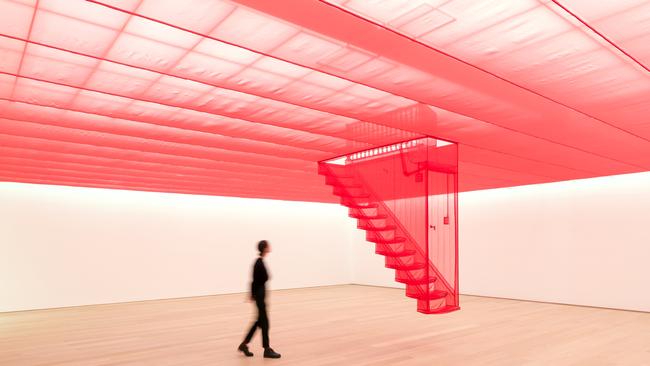
Perhaps everyone remembers, as a child, waking up during the night in a hotel or an unfamiliar house and for a moment not being able to find the door of the bedroom. The whole orientation of the room seems unfamiliar; feeling your way in the dark, you discover a window-sash where you expected the door handle, a bookcase where you reached for the light switch.
Marcel Proust, who died just over a century ago on November 18, 1922, wrote memorably near the beginning of A la recherche du temps perdu (1913-27), of the experience of sleeping, waking and the sense of self: “A sleeping man holds in a circle around him the thread of hours, the order of years and of worlds. He instinctively consults them as he wakes, and reads there in a second the point on the earth that he occupies, the time that has passed until his waking.”
But, as he goes on to say, we can lose our hold on this thread, especially in a strange place or when our habits are disturbed: “But it was enough, even in my own bed, for my sleep to have been deep and to have completely relaxed my mind; and then it forgot the layout of the place where I had fallen asleep, and when I awoke in the middle of the night, as I had forgotten where I was, I did not even know, for the first instant, who I was; I had only, in its primal simplicity, the feeling of existence as it might quiver in the depths of an animal; I was more naked than a caveman; but then memory – not yet of the place where I was, but of others where I had lived and where I might have been – came to me as an aid from on high to draw me out of a nothingness from which I could not have escaped alone.”
This feeling of the intimate connection between our sense of being and the space we occupy is at the heart of Do Ho Suh’s work, which is displayed on two levels at the Museum of Contemporary Art Australia in Sydney; for both formal and thematic reasons, it is advisable to start upstairs, saving the remarkable piece displayed downstairs for the conclusion.
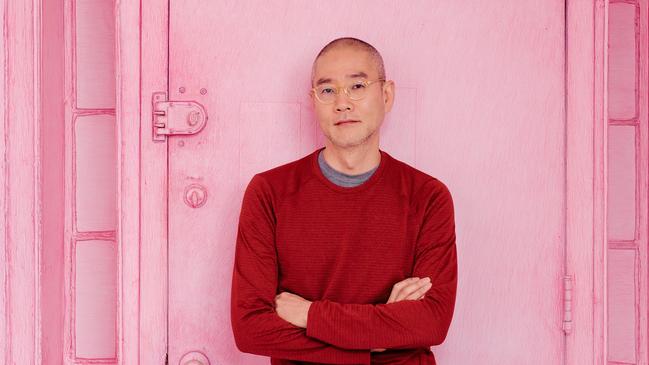
Do Ho Suh was born in South Korea in 1962, the son of Suh Se-ok (1929-2020), himself a distinguished modern Korean artist, but has spent most of his working life abroad. He now lives in London after spending many years in New York, and his departure from the flat he occupied there for many years there has led him to undertake an ambitious work that is explained in a video documentary included in the exhibition.
Before describing this project, however, we should consider his earlier fabric sculptures, several of which were already inspired by the same flat in New York. The earliest of these, Staircase III (2010), one of his most evocative and frequently reproduced works, occupies a central gallery at the MCA and is indeed the aesthetic high point of the first section of the exhibition.
Ostensibly, the work is a full-scale reproduction of a narrow wooden staircase leading up from the artist’s flat to that of his landlord, a kindly man who became a close friend and perhaps something of a father figure to a young man living far from his family.
But although the original is precisely matched in scale, it is entirely transformed in its materiality, reproduced in a red mesh-like fabric that is insubstantial, translucent and fills the whole gallery with an ambient red glow.
The work was originally made for a gallery at the Tate, and there is a video on the Tate site showing the installation in progress with commentary by the artist who observes that, living as an expatriate and a traveller between worlds, he is particularly fascinated by doors, corridors and other points of transition between one space and another. His choice of material is significant in this regard too, since fabric works are light, demountable and can be relatively easily packed, moved and installed elsewhere.
Interestingly, the work was originally designed for a much higher room at the Tate, so that the run of steps began well above the heads of the visitors to the gallery; here, hung lower, the stairs begin only just above the floor. In some ways it is more effective than in London because the implied invitation to climb the staircase, and therefore the affective involvement of the audience, is much stronger.
At the same time, the fragile fabric from which the installation is made contradicts the function of a staircase; sculpture, like dance, is an art that invokes the corporeal response of the body, and just as we subtly feel and virtually emulate the attitude of a figure sculpture, here we feel the all the prompts and memories associated with climbing a flight of stairs, yet simultaneously feel the impossibility of setting foot on soft webbing. Instead, they leave us with imaginative after-images and associations, as of climbing into an aircraft, and because practical function is denied, symbolic resonances suggest themselves: why are we invited to ascend? What awaits us in the space above?
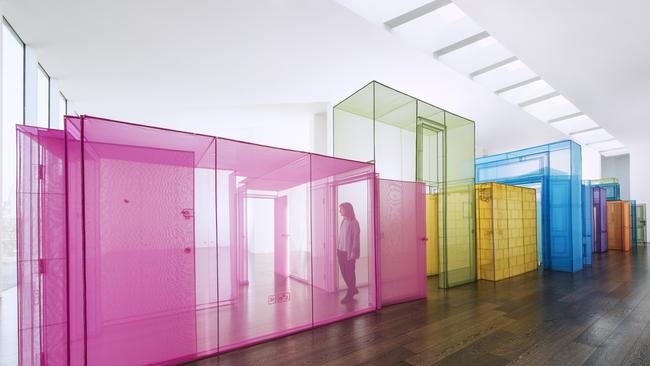
A few years later, between 2013 and 2015, Suh made a series of smaller pieces inspired by the same apartment, only this time they were separate items and appliances, collectively titled Specimens. A toilet, a handbasin, a medicine cabinet and a stove were crafted, with the most minute attention to accuracy and detail, out of blue synthetic fabric, once again translucent and insubstantial, each inside a protective glass case, floating in blue luminosity.
The aesthetic principle behind objects like these is similar to the one I invoked a few weeks ago in talking about the work of Cressida Campbell, even though the two exhibitions could, on the face of it, hardly be more different. But once again it is that pleasure we have in the tension between sameness and difference, between illusion and artifice or mimesis and poiesis: it is in the process of remaking something in an intrinsically different medium and material that we understand something about it, aesthetically and imaginatively.
The next important set of work is the Hub series, here represented by six pieces made between 2015 and 2018. Developing his theme of transitional spaces, Suh has once again used fabric, but has now reproduced a series of entrance spaces, lobbies, halls and corridors from different moments and stages of his life. Each space is specific and has been painstakingly reproduced by a process, it seems, of lining them with fabric, no doubt wet and lightly sized, pressed on to door frames, doors, windows and other details such as a fire extinguisher, then carefully removed when dry and moulded into the contour of the architectural detail.
Three of these pieces are based on spaces in London and three are from Seoul, so that each has a different architectural character, evoking different phases of the artist’s own experience.
Each one is reproduced in fabric of a different colour, and they are presented in a row, end to end, so that the visitor walks through each of these spaces, appreciating their different qualities of scale and architectural style as well as their varying sense of enclosure, as some only have an entrance and an exit at either end, while others open rather disconcertingly in different directions. The installations are fragile and a team of gallery assistants has to remind visitors that only one person is allowed in each space – or colour – at a time.
This brings us back to the project that is described at length in the video near the start of the exhibition. For after two decades living in the New York flat, which included his living quarters and studio, Suh felt impelled to make a reproduction of its entire interior space.
If any space had for him that connection Proust wrote of between “where I was” and “who I was”, this was certainly it. He had in fact made a fabric version of the apartment in 2015. Now, however, he decided to work with paper, which would no longer be translucent, but which would allow him to reproduce the textures of the walls and architectural details through the technique of rubbing. So the first stage was to line the entire flat with paper – no doubt wet and sized to take the form of mouldings and other details – and then followed the long process of rubbing with the side of a pencil over the whole interior surface of the space.
Watching Suh at work in the video and hearing him talk about what he is doing, it is clear that this work has become something like a meditation or spiritual practice. It is a way to commune with memory, to dwell in spirit in a place in which he physically lived for such a long and decisive period of his life, but also to be present and at peace in the world.
It is with all this in mind that one is ready to encounter and to appreciate the remarkable work downstairs which forms the conclusion of the exhibition.
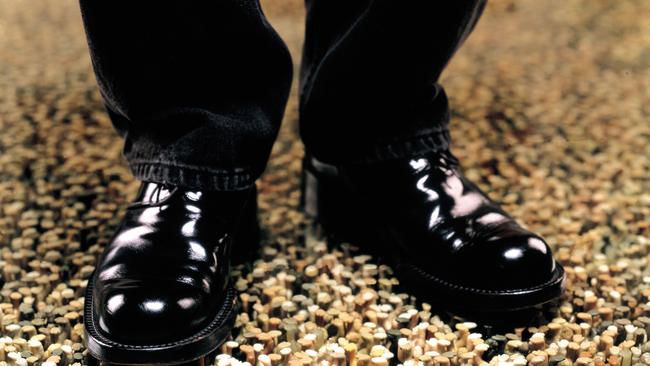
At first sight, this appears to be a full-scale model of a traditional Korean house. And indeed it is the house his father built, and there are images of it in the accompanying documentary video, a handsome pavilion situated in an elegant traditional Korean garden.
The choice of the motif is clearly deeply meaningful for the artist, perhaps all the more so when we consider that his decision to leave Korea was, it seems, partly to be able to develop as an artist outside the shadow of his father’s eminence, to be more than simply Suh Se-ok’s son. But with his father’s death two years ago, this work is evidently a monument both to memory and to filial piety.
It is almost incredible to think what we see before us – supported of course by a light aluminium frame – is entirely made of rubbings on the traditional mulberry bark paper known as hanji which has been produced in Korea for at least 1500 years.
The documentary shows images of the rubbing process and of the paper being carefully removed in sections with scissors, and the whole task was clearly an enormous effort, even if Suh was no doubt aided by a number of assistants.
It makes a suggestive contrast, too, with the apartment project in New York. There, the interior represented the shell of his own intimate and personal life; here the exterior is more appropriate, for he did not have access to his father’s interior life.
And yet the care and love he has expended on recording every detail of the exterior he knew has produced a moving if fragile expression of homage and devotion.
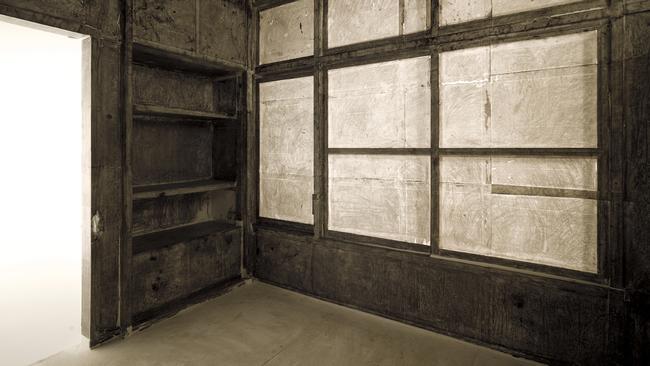
Story of the Moving Image
Australian Centre for the Moving Image
New permanent exhibition




To join the conversation, please log in. Don't have an account? Register
Join the conversation, you are commenting as Logout